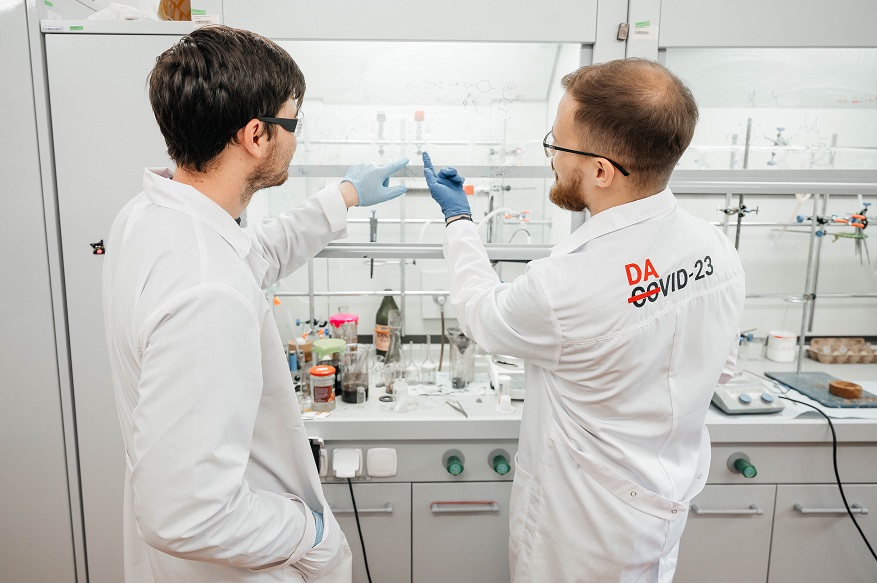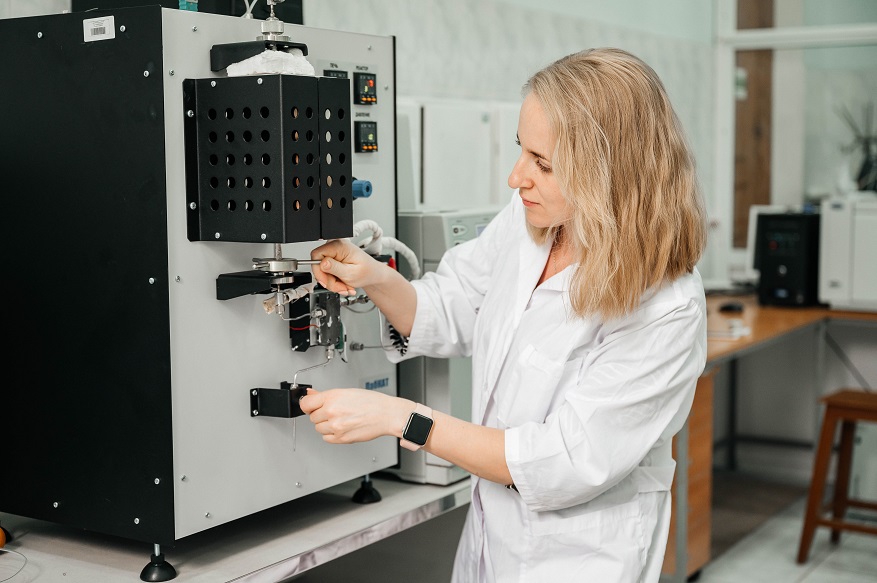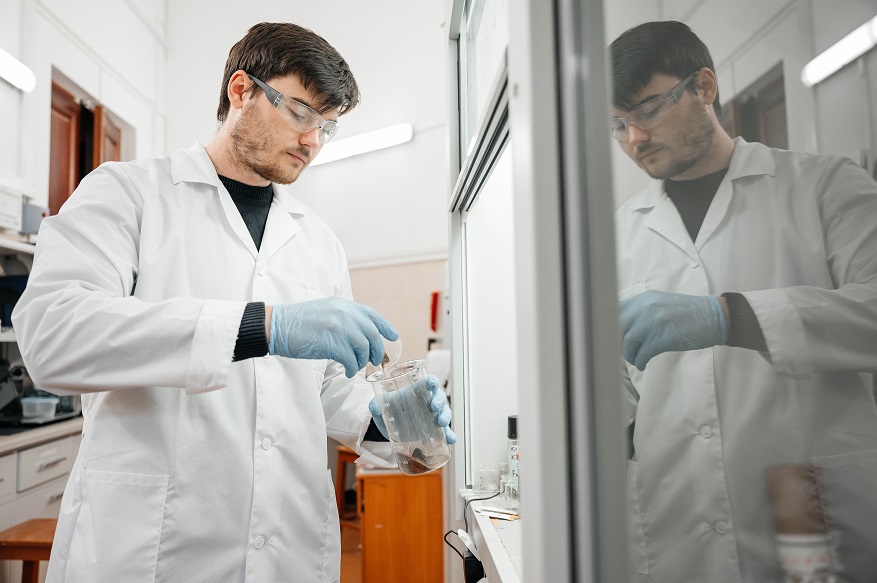Other materials about faculty and scientists of Tomsk Polytechnic University:
Professor Potylitsyn: Black Diamond, Two Rectors and Team
Chemistry as an ongoing search
— Why chemistry and why TPU?
— It happened so that my entire life is closely linked to Tomsk Polytechnic University. Choosing among Tomsk universities after high school, I opted for TPU as it offered more wide-ranging research topics in organic chemistry, which I was interested in, both in terms of theoretical and applied research. Besides, Tomsk Polytechnic University is the first chemical educational institution in Siberia and the Far East, where the Siberian school of organic chemistry was founded. Its long history underlies its vibrant present and bright future.
As for my passion for chemistry, it is hard to explain... I would say that chemistry is a science that studies the root-causes of events and phenomena at the deepest, molecular level. This is what makes it fascinating.
— What makes chemistry attractive as a career path?
— There is a room for creativity, despite the precise formulas. Companies employ the same technologies. We, roughly speaking, need a certain molecule, and we obtain it by known methods. Science, by contrast, is a constant search. We try to analyze how molecules interact with each other and how new molecular structures are formed. In science, we usually know what we want to achieve, but we never know for sure how to do it. The way we use existing knowledge, tested technologies and tools is what makes our work creative. Sometimes it happens the other way round: we discover new reactions not knowing in advance how they will work, what their mechanisms are, and which molecules they are suitable for or not. This is also very exciting because we discover new transformations and explore unknown facets of chemistry.
— Is it still possible to discover something new in chemistry?
— On the one hand, molecules and atoms have long been known. All of the most fundamental discoveries in this area have already been made by scientists of the past centuries. But when it comes to new transformations, new ways to obtain well-known and unknown substances, there is a whole lot of uncharted territory to explore. The latest Nobel Prizes, for example, were awarded exactly for the discovery of new reactions in organic chemistry.
It is similar to the alphabet: everyone knows the letters, but they can be put together in different sequences resulting in a new book. Similarly with chemistry: materials and tools are known, but they can be used in many different ways, thus giving new, sometimes unexpected results.

Molecular design
— What does the Laboratory of Chemical Engineering and Molecular Design do?
— In a nutshell, we design new molecules. Our team was formed in 2021, following a competitive grant from the Russian Ministry of Science and Higher Education along with other youth laboratories engaged in advanced research.
The laboratory consists of 17 researchers, mostly undergraduate and postgraduate students. It includes three internal subgroups, each pursuing its own area of research. For instance, the group led by senior researcher Ekaterina Kolobova studies the oxidation of betulin, a complex molecule found in large quantities in birch bark, which, in its turn, is a waste product of the woodworking industry. By modifying the skeleton of the betulin molecule, we can obtain substances with antiviral and other properties for medical applications.
The research group of Antonio Di Martino, Senior Research Fellow, is engaged in more applied research aimed at obtaining high value-added products. For example, the team synthesizes eco-friendly polysaccharide-based hydrogels for agriculture. These hydrogels retain moisture and fertilizers in the soil. Besides, the team is currently researching the production of biodiesels from vegetable oils.
A team of young researchers led by me is now studying methods of synthesizing low-molecular-weight carbohydrates. In particular, it is the assembly of large oligosaccharide molecules from small fragments of monosaccharides. We also focus on the synthesis of natural low molecular weight carbohydrate-containing compounds, methods of their analysis in natural raw materials, and the study of basic patterns of their reactivity and the impact of the protecting groups. In addition, we modify the structures of biologically significant compounds by introducing carbohydrate fragments and modify the skeleton of carbohydrates themselves by photochemical transformations. This is a highly promising, interesting, and in-demand research area. There are only a few research teams in Russia dealing with carbohydrates. In Siberia, we are a unique research team, synthesizing low molecular weight carbohydrate-containing molecules.
Rashid Valiev, Doctor of Chemistry, is also a member of the youth laboratory. He supports all three research groups with quantum-chemical calculations. By means of computer modeling, he helps to get onto various organic processes, which my colleagues and I study experimentally.
— Why modify carbohydrates?
— Carbohydrates play a key role in many essential processes in all live cells. Carbohydrates can have atypical structures with abnormal bonds that are unrepresentative of common sugars (carbohydrates) such as glucose, mannose, galactose, and so on. These uncommon sugars are often found on the surface of bacteria causing various pathological processes. Cells in the human body are highly specific in recognizing them in their own way and interacting with these carbohydrates. Therefore, bacteria can attach to human cells and that is how it gets infected. If we modify the sugars contained in bacteria and "give" them to the body, it will learn to recognize them and react in a different way, for example, by producing antibodies. In other words, the synthesis of sugars is potentially beneficial for the development of vaccines, as well as a variety of medicines, from antioxidant to antiparasitic ones. This is one of its applications.Note
Young researchers who would like to join the research group projects are welcome to contact Elena Stepanova, Head of the Laboratory at Eline@tpu.ru.
Total synthesis, "soft" modification, and more
— How are objects for molecular design selected?
— The laboratory is developing two major research areas. The first is the synthesis of complex natural molecules, which have never been synthesized before, from simple available compounds also known as total synthesis. Such molecules can find applications, primarily, in medicine. For example, our postgraduate student is currently synthesizing Curculigoside A. This is a carbohydrate-containing compound that is extracted from the roots of Solidago virgaurea, which grows in warm Asian countries. It has high bioactivity level, which makes it of medical interest. However, its extraction from plants requires processing of large volumes of raw material. We are now studying if multigram synthesis of this substance from glucose and simple phenols is possible.
The second research area is the design of synthetic methods. This is a fundamental research into reactivity of organic compounds in new reactions. One of the effective methods is photochemical modification. In particular, we have developed a method to synthesize amino acids, including from compounds, sugars containing carboxyl, alcohol or amino groups. It can be translated to a large number of molecules from these functional groups. The development of synthetic methods aims to determine the opportunities and limitations that our proposed method brings and to understand the mechanism behind it.
— What are the main long-term goals of the team?
— One of the goals is to develop new, more "soft" methods of modification at the latest stages of synthesis. They are suitable for complex molecules, when it is necessary to modify only a small segment of the molecule. This is a challenging task, since a large complex framework can be easily damaged by exposure to temperature and chemical agents. The photochemical methods we are developing will potentially make it possible to selectively modify a specific segment of a molecule framework in a reduced number of chemical steps.
The team also plans to create new efficient and eco-friendly methods of synthesizing biodegradable polymeric materials based on natural compounds (such as polysaccharides) derived from forestry, agriculture and food industry wastes. These materials may potentially be used in the production of biodegradable smart fertilizers as well as in drug carriers and their controlled release.






